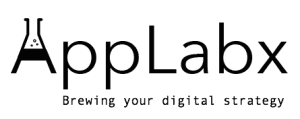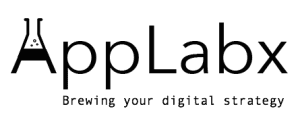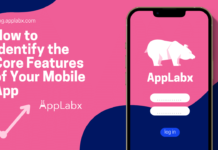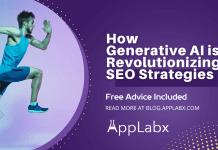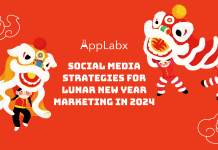Key Takeaways
- AI agents enhance business efficiency by automating tasks, streamlining workflows, and enabling real-time decision-making.
- Top use cases include customer support automation, sales enablement, internal process optimization, and market intelligence.
- Implementing AI agents leads to reduced costs, improved productivity, and a scalable foundation for digital transformation.
In today’s fast-paced digital economy, business efficiency is no longer just a competitive advantage—it’s a survival requirement. As organizations across industries navigate an increasingly complex operational landscape, the demand for intelligent, scalable, and automated solutions is at an all-time high. This is where AI agents come into play. Powered by cutting-edge technologies like natural language processing (NLP), machine learning (ML), and automation frameworks, AI agents are redefining how companies approach productivity, customer engagement, internal processes, and data analysis.

AI agent development has rapidly evolved beyond traditional chatbots and rule-based systems. Modern AI agents are autonomous, context-aware, and capable of executing multi-step tasks without human intervention. They function as intelligent digital workers, capable of understanding natural language inputs, learning from data, and making real-time decisions. From handling customer support inquiries and generating qualified leads to automating routine HR tasks and providing real-time competitive insights, AI agents are being deployed in increasingly diverse and high-impact use cases.
The surge in AI agent adoption is not merely a trend—it is a strategic move toward long-term operational optimization. Businesses are recognizing that repetitive and time-consuming processes can be delegated to intelligent systems, freeing up human employees to focus on strategic, creative, and high-value tasks. This shift not only boosts overall efficiency but also significantly reduces operational costs, minimizes errors, and accelerates decision-making.
According to recent industry reports, organizations that have embraced AI agents report measurable improvements in process efficiency, employee satisfaction, and customer retention. For instance, AI-powered customer support agents can handle thousands of inquiries simultaneously with consistent accuracy, while AI sales agents can qualify leads and book appointments at scale without human supervision. These capabilities are not limited to large enterprises; even small and medium-sized businesses are leveraging AI agents to stay agile and competitive in saturated markets.
Furthermore, the ongoing advancements in generative AI, deep learning, and low-code/no-code development platforms have made AI agent deployment more accessible than ever before. Businesses no longer need to invest heavily in custom-built AI infrastructure. With a growing ecosystem of ready-to-integrate tools and frameworks, companies can now implement and scale AI agents quickly, cost-effectively, and with minimal technical overhead.
In this blog post, we will explore the top five use cases for AI agent development that are driving business efficiency across various sectors. Each use case will highlight how AI agents are transforming traditional workflows, delivering measurable ROI, and enabling organizations to stay ahead of the curve in an increasingly automated world. Whether you’re a startup founder, IT director, or enterprise executive, understanding these applications will equip you with the insights needed to make informed decisions about integrating AI agents into your operations.
Let’s dive into the most powerful ways AI agents are being used to optimize business efficiency and performance in 2025 and beyond.
What Are AI Agents?
AI agents are intelligent software entities designed to autonomously perform tasks, make decisions, and interact with users or systems using artificial intelligence technologies. Unlike traditional programs, which follow fixed instructions, AI agents learn from data, adapt to new inputs, and operate independently across a wide range of business environments.
Definition and Core Concept
- AI Agent:
A software system capable of perceiving its environment, reasoning to interpret data, and acting autonomously to achieve specific goals. - Goal-Oriented Behavior:
AI agents are designed to solve problems, optimize outcomes, or support human decision-making based on predefined objectives. - Autonomy and Adaptability:
They can operate without constant human supervision, learning from experience and improving performance over time.
Key Technologies Powering AI Agents
- Natural Language Processing (NLP):
Enables understanding and generation of human language in real-time.
Example: AI agents used in virtual customer service desks. - Machine Learning (ML):
Empowers agents to learn patterns, predict outcomes, and improve through data.
Example: AI agents analyzing customer churn data to flag high-risk accounts. - Robotic Process Automation (RPA):
Facilitates the automation of repetitive, rule-based tasks.
Example: Agents handling invoice processing in finance departments. - Knowledge Graphs and Semantic Search:
Enhances understanding of context and relationships between data points.
Example: Enterprise knowledge agents supporting employee onboarding.
Types of AI Agents
| Type | Functionality | Example Use Case |
|---|---|---|
| Reactive Agents | Respond to inputs with predefined actions | Basic chatbot replying to FAQs |
| Model-Based Agents | Build internal models of the environment | AI for warehouse navigation |
| Goal-Based Agents | Make decisions to achieve specific goals | Sales AI agent qualifying leads |
| Utility-Based Agents | Maximize utility or outcomes through calculated decisions | Pricing AI agent adjusting rates dynamically |
| Learning Agents | Continuously learn and adapt from data and feedback | Email filtering agent improving over time |
AI Agents vs Traditional Automation vs Chatbots
| Feature | AI Agents | Traditional Automation | Rule-Based Chatbots |
|---|---|---|---|
| Autonomy | High | Low | Low |
| Adaptability | Learns and improves | Fixed rules | Limited to predefined flows |
| Task Complexity | Handles complex multi-step workflows | Best for repetitive simple tasks | Best for simple Q&A |
| Data Handling | Can analyze and interpret real-time | Relies on static data | Predefined script-based |
| Human Interaction | Context-aware conversations | No human interaction | Basic responses only |
| Examples | AI virtual assistant, AI sales rep | Macro-based Excel task | Customer support chatbot |
Real-World Examples of AI Agents in Action
- E-commerce:
- AI shopping assistant helping customers find products based on preferences
- Inventory management agents automatically restocking items based on demand forecasting
- Healthcare:
- AI triage agents suggesting possible conditions and booking doctor appointments
- Patient follow-up agents ensuring medication adherence
- Finance:
- AI agents performing fraud detection in real-time
- Automated financial advisors offering investment suggestions
- Human Resources:
- Resume screening agents filtering applicants by skills and experience
- Onboarding agents guiding new hires through processes and policy information
- Marketing:
- Campaign optimization agents analyzing performance and reallocating budgets
- AI content agents generating and A/B testing ad copy
Capabilities That Set AI Agents Apart
- Proactive Decision-Making:
Capable of initiating tasks rather than waiting for human input. - Scalability:
Operate across thousands of customer interactions or internal processes simultaneously. - Context Awareness:
Understand conversation history, user preferences, and situational cues. - Cross-Platform Integration:
Seamlessly integrate with CRM, ERP, HRIS, and custom APIs.
AI Agent Application Matrix by Department
| Department | Key AI Agent Use Case | Efficiency Boost |
|---|---|---|
| Customer Support | 24/7 ticket resolution and sentiment analysis | Reduced response time by 70% |
| Sales | Lead qualification and calendar scheduling | Increased pipeline velocity |
| Operations | Workflow automation and reporting agents | Lower operational costs |
| Marketing | AI ad optimization and social listening agents | Enhanced campaign performance |
| HR | Virtual onboarding assistants | Streamlined hiring and training |
Conclusion: The Role of AI Agents in Modern Business
AI agents are no longer a futuristic concept—they are an essential part of modern business infrastructure. By blending advanced automation with intelligent decision-making, AI agents provide the foundation for scalable, efficient, and data-driven operations. As businesses increasingly prioritize agility and responsiveness, the integration of AI agents across departments will be a key driver of competitive advantage and innovation.
Why AI Agents Matter for Business Efficiency
AI agents have emerged as one of the most impactful innovations in enterprise technology, offering businesses a scalable and intelligent way to boost efficiency, lower operational costs, and accelerate decision-making. Their ability to automate complex workflows, provide 24/7 support, and deliver contextual insights makes them essential tools in today’s highly competitive, data-driven business environment.
1. Time and Resource Optimization
- Eliminate Manual Tasks:
- Automate repetitive administrative duties such as data entry, scheduling, and follow-ups
- Free up employee time for strategic and creative functions
- 24/7 Availability:
- Unlike human workers, AI agents operate around the clock without breaks or downtime
- Enhance global service delivery, especially for distributed teams
- Real-Time Execution:
- Perform tasks in seconds that would take humans hours
- Immediate response to time-sensitive issues (e.g., IT alerts, fraud detection)
Example:
An AI agent used in customer service can handle 80% of routine inquiries instantly, allowing human agents to focus on complex support cases.
2. Cost Reduction Across Business Functions
- Lower Labor Costs:
- Reduce the need for hiring additional staff for scaling operations
- Ideal for startups and SMEs looking to do more with lean teams
- Minimized Errors and Rework:
- AI agents perform tasks with high accuracy, reducing costly human errors
- Improve compliance and data integrity
- Decreased Training Costs:
- Once deployed, AI agents can scale instantly without the need for retraining
- Self-learning agents adapt to new rules or data changes autonomously
Cost Efficiency Matrix:
| Department | AI Agent Functionality | Estimated Cost Savings |
|---|---|---|
| Customer Support | Chat support, email handling | Up to 50% |
| Sales | Lead scoring, meeting booking | 30–40% |
| HR | Resume screening, onboarding | 25–35% |
| IT | Automated diagnostics and ticketing | 40–60% |
| Finance | Invoice matching, fraud detection | 35–50% |
3. Scalability and Flexibility
- Effortless Scaling:
- AI agents can handle growing workloads without additional resources
- Ideal for businesses experiencing seasonal spikes or global expansion
- Cross-Platform Integration:
- Integrate with CRMs, ERPs, HRMS, and marketing platforms
- Centralize data flows and create unified processes
- Multi-Language and Multi-Channel Support:
- Communicate across different platforms (email, chat, voice)
- Support diverse audiences without additional localization costs
Example:
A retail company uses AI agents to manage online customer chats in English, Spanish, and Mandarin during Black Friday, handling 20x the usual volume without adding headcount.
4. Enhanced Decision-Making with Real-Time Insights
- Predictive Analytics:
- AI agents analyze trends and forecast outcomes based on real-time data
- Proactively identify opportunities and risks
- Continuous Learning:
- Improve decision-making over time by learning from interactions and outcomes
- Recommend next-best actions using historical performance data
- Data-Driven Culture:
- Promote evidence-based decisions across departments
- Democratize access to analytics with easy-to-use interfaces
Decision Support Use Case Examples:
| Industry | AI Agent Insight Capability | Operational Impact |
|---|---|---|
| Retail | Dynamic pricing and inventory forecasting | Improved inventory turnover |
| Finance | Real-time fraud detection and mitigation | Minimized financial losses |
| Healthcare | Patient diagnosis and risk assessments | Improved patient outcomes |
| Logistics | Route optimization and delay prediction | Reduced shipping costs |
| Marketing | Ad campaign performance analysis | Higher ROI from marketing spend |
5. Improved Customer and Employee Experience
- Instant Support for Customers:
- AI agents deliver quick, consistent answers to user queries
- Reduce wait times and increase satisfaction rates
- Empowered Employees:
- AI assistants help staff complete tasks faster (e.g., document retrieval, report generation)
- Reduce frustration and burnout associated with repetitive work
- Personalized Experiences:
- Agents tailor responses and recommendations based on user behavior and history
- Increase engagement and conversion rates
Customer Experience Impact Chart:
| Metric | Before AI Agents | After AI Agents |
|---|---|---|
| Average Response Time | 12 minutes | 30 seconds |
| First Contact Resolution Rate | 65% | 88% |
| CSAT Score | 3.7 / 5 | 4.6 / 5 |
| Employee NPS (Internal Support) | 35 | 60 |
6. Competitive Advantage in the AI Era
- Faster Innovation Cycles:
- Automate market research and product feedback collection
- Accelerate iteration and development timelines
- Agility in Decision-Making:
- Respond rapidly to market shifts or competitor actions
- Use AI agents to monitor social trends, news, and sentiment
- Business Continuity and Resilience:
- Maintain operations even during staffing shortages or crises
- Reduce risk through real-time monitoring and self-healing systems
Example:
A global logistics provider uses AI agents for dynamic rerouting during weather disruptions, ensuring 98% on-time delivery even under challenging conditions.
Conclusion: AI Agents as the Engine of Efficient Business Operations
AI agents are no longer auxiliary tools; they are central to how modern businesses operate efficiently and intelligently. From cost savings and performance improvement to employee enablement and customer satisfaction, AI agents transform how value is created and delivered across every sector. As businesses continue to adopt intelligent automation, those leveraging AI agents early will enjoy unmatched operational speed, adaptability, and insight-driven growth.
But, before we venture further, we like to share who we are and what we do.
About AppLabx
From developing a solid marketing plan to creating compelling content, optimizing for search engines, leveraging social media, and utilizing paid advertising, AppLabx offers a comprehensive suite of digital marketing services designed to drive growth and profitability for your business.
AppLabx is well known for helping companies and startups create world-class AI agents.
At AppLabx, we understand that no two businesses are alike. That’s why we take a personalized approach to every project, working closely with our clients to understand their unique needs and goals, and developing customized strategies to help them achieve success.
If you need a digital consultation, then send in an inquiry here.
Boosting Business Efficiency: Top 5 Use Cases for AI Agent Development
- Customer Support Automation
- Sales and Lead Generation
- Internal Workflow Automation
- Market Research and Competitive Intelligence
- Personalized Employee Assistance
1. Customer Support Automation
Customer support automation is one of the most transformative and widely adopted use cases for AI agent development. Businesses across industries are turning to AI agents to handle high volumes of customer inquiries, reduce response times, improve user satisfaction, and minimize operational costs. These AI-driven systems provide consistent, real-time support through chat, email, voice, and social platforms—redefining how customer service is delivered at scale.
How AI Agents Automate Customer Support
- Natural Language Understanding (NLU):
- Comprehend customer intent from unstructured text and voice inputs
- Support multiple languages and dialects for global service delivery
- 24/7 Intelligent Response:
- AI agents operate continuously with no downtime
- Deliver real-time assistance across multiple platforms (web, mobile, social)
- Smart Ticketing and Routing:
- Automatically create and prioritize support tickets
- Route complex cases to the right human agent based on urgency and context
- Omnichannel Integration:
- Consistent experience across live chat, email, messaging apps, and voice platforms
- Unified customer history accessible by all agents (human or AI)
Core Benefits of Customer Support Automation with AI Agents
- Reduced Operational Costs:
- Significantly decrease the need for large human support teams
- Avoid overtime, night shifts, and extra staffing during high-volume periods
- Faster Response and Resolution Times:
- Immediate handling of common queries such as shipping updates or password resets
- Escalation only when human input is essential
- Increased Customer Satisfaction (CSAT):
- Lower wait times and higher availability
- Personalized responses based on customer history
- Scalable Support Infrastructure:
- Handle thousands of conversations simultaneously
- Effortlessly manage traffic spikes during product launches or promotions
AI Customer Support Agent Capabilities Matrix
| Functionality | AI Agent Capability | Business Impact |
|---|---|---|
| Intent Recognition | Understand user goals and provide accurate answers | Reduces miscommunication and frustration |
| Sentiment Analysis | Detect customer mood to adjust tone or escalate as needed | Improves emotional intelligence of support |
| Context Retention | Maintain conversation context across interactions | Enables seamless multi-turn conversations |
| Knowledge Base Access | Fetch articles or policy information instantly | Reduces handle time by 40–60% |
| Multilingual Support | Communicate in user’s native language | Expands customer reach |
| Feedback Collection | Request CSAT/NPS at end of conversations | Drives continuous service improvement |
Industry-Specific Use Cases and Examples
- E-commerce and Retail:
- Order tracking, refund processing, and product recommendations
- Example: Shopify merchants using AI agents to reduce inquiry volume by 70%
- Telecommunications:
- Service troubleshooting, bill inquiries, and plan upgrades
- Example: Vodafone’s TOBi AI assistant resolves 60% of queries without human input
- Banking and Fintech:
- Balance checks, fraud alerts, and loan eligibility responses
- Example: AI chatbots from Bank of America handling over 10 million customer interactions per year
- Travel and Hospitality:
- Booking confirmations, itinerary changes, and baggage assistance
- Example: Expedia’s virtual assistant automates booking-related questions in real time
- SaaS and IT Helpdesks:
- Password resets, system alerts, and how-to guidance
- Example: Internal AI IT agents reducing ticket volume by 50% at enterprise software companies
Before and After: AI in Customer Support
| Metric | Before AI Agent | After AI Agent Implementation |
|---|---|---|
| Average First Response Time | 15 minutes | Under 1 minute |
| Tickets Handled Per Hour | 10–15 per agent | 100+ per AI agent |
| Customer Satisfaction (CSAT) | 3.8 / 5 | 4.6 / 5 |
| Escalation to Human Agents | 90% | <30% |
| Support Team Size (for same load) | 50+ agents | 15 agents + AI system |
Customer Support Automation Tools and Tech Stack
- NLP & NLU Engines:
- Google Dialogflow, OpenAI GPT, Rasa, Amazon Lex
- Bot Frameworks:
- Microsoft Bot Framework, Botpress, Kore.ai
- Helpdesk Integrations:
- Zendesk, Freshdesk, Salesforce Service Cloud, Intercom
- Analytics & Monitoring:
- Dashbot, Botanalytics, Google Analytics, Power BI
Challenges and Best Practices
- Challenges:
- Handling edge cases or emotionally charged queries
- Integration with legacy systems and unstructured databases
- Maintaining brand tone and voice across AI interactions
- Best Practices:
- Use a hybrid model (AI + human fallback)
- Continuously train the agent with updated data and feedback
- Start with narrow use cases and gradually scale
Conclusion: A New Era of Scalable, Intelligent Support
Customer support automation through AI agents is not just a cost-saving tactic—it’s a strategic enabler of long-term growth and operational resilience. By deploying AI-powered agents, businesses unlock new levels of responsiveness, availability, and service personalization. Whether handling hundreds or millions of customers, AI agents allow organizations to scale without compromising quality, ushering in a new era of intelligent, data-driven customer engagement.
2. Sales and Lead Generation
AI agents are revolutionizing sales and lead generation by enabling businesses to identify, qualify, nurture, and convert prospects at scale. Unlike traditional sales tools, AI-powered sales agents work autonomously, making real-time decisions based on user behavior, intent signals, and data patterns. These agents can manage outbound campaigns, engage inbound leads, and assist sales teams by automating repetitive tasks—freeing human reps to focus on high-value interactions.
How AI Agents Drive Sales and Lead Generation
- Lead Qualification and Scoring:
- Evaluate prospects using behavioral data, firmographics, and engagement signals
- Prioritize leads based on conversion likelihood using predictive models
- AI-Powered Outreach and Engagement:
- Send personalized emails, LinkedIn messages, or SMS sequences
- Respond instantly to website inquiries or chatbot conversations
- Calendar Scheduling and Follow-ups:
- Automate meeting bookings and reminders without human intervention
- Reduce no-shows with AI-driven confirmation and rescheduling workflows
- CRM Data Enrichment and Syncing:
- Auto-populate contact profiles with data from public and proprietary sources
- Keep CRM updated in real time without manual entry
Core Benefits of AI in Sales and Lead Generation
- Increased Lead Conversion Rates:
- Engage leads at the right time with personalized messaging
- Reduce drop-offs with faster, tailored follow-ups
- Higher Pipeline Velocity:
- Accelerate movement from MQL (Marketing Qualified Lead) to SQL (Sales Qualified Lead)
- Reduce sales cycle duration by automating touchpoints
- Lower Customer Acquisition Cost (CAC):
- Reduce dependency on manual outreach and paid ads
- Optimize lead nurturing with data-driven workflows
- Scalable Prospecting:
- Identify and engage thousands of leads daily with zero human fatigue
- Cover multiple geographies and time zones simultaneously
AI Sales Agent Functional Matrix
| Function | AI Agent Capability | Sales Impact |
|---|---|---|
| Lead Qualification | Analyze firmographics, behavior, and intent | Focus sales team on high-probability deals |
| Conversation Personalization | Dynamic messaging based on lead data | Increase email open and response rates |
| Automated Follow-Ups | Trigger workflows based on lead interactions | Reduce drop-offs and missed opportunities |
| Meeting Scheduling | Book calls automatically via integrated calendars | Save 30–50% of scheduling time |
| Pipeline Reporting | Track stage movement and activity scores in real time | Improve forecasting accuracy |
Use Case Examples by Industry
- SaaS and B2B Tech:
- AI agents qualify inbound demo requests, follow up via email, and schedule Zoom meetings
- Example: Drift’s AI agent books 30% more qualified demos by engaging leads within 5 seconds
- Real Estate:
- AI agents handle inquiries from property listing websites and initiate pre-qualification
- Example: Agents deliver custom property recommendations via SMS based on buyer profiles
- E-commerce and DTC Brands:
- Cart abandonment agents re-engage users with personalized discounts
- Example: AI chatbot increases checkout conversion by 25% through proactive engagement
- Financial Services:
- Agents conduct pre-qualification for loans, credit cards, or insurance policies
- Example: AI qualifies mortgage leads based on income, credit score, and loan preferences
- Education and Online Courses:
- AI assistants guide prospective students through application funnels
- Example: Universities using AI chatbots improve lead-to-enrollment rate by 20%
Before and After AI Integration in Sales Funnel
| Sales Funnel Stage | Without AI Agents | With AI Agents |
|---|---|---|
| Lead Capture | Delayed responses, low engagement | Real-time engagement, high responsiveness |
| Lead Qualification | Manual review, slow filtering | Instant scoring and prioritization |
| Outreach | Generic and time-consuming | Personalized and automated |
| Follow-up | Inconsistent and error-prone | Trigger-based, consistent interactions |
| Meeting Scheduling | Manual email exchanges | One-click booking through chat or email |
| CRM Updates | Often outdated or incomplete | Real-time and enriched data |
AI Agent Tools for Sales Automation
- Conversational AI & Chatbots:
- Intercom, Drift, ManyChat, Tidio
- AI Outreach Platforms:
- Instantly.ai, Apollo.io, Lemlist, Clay
- CRM Integrations:
- Salesforce, HubSpot, Zoho CRM, Pipedrive
- Calendar and Scheduling:
- Calendly, Chili Piper, Google Calendar APIs
- Data Enrichment Tools:
- Clearbit, ZoomInfo, Lusha, Clay
Performance Improvement Chart (Post-AI Agent Implementation)
| Metric | Before AI Agents | After AI Agents |
|---|---|---|
| Lead Response Time | 2–4 hours | <1 minute |
| SQL to Opportunity Conversion | 22% | 38% |
| Sales Cycle Length | 34 days | 21 days |
| Rep Productivity (Leads/Day) | 20–30 | 80–120 |
| Average Open Rate (Outreach) | 18% | 42% |
Challenges and Best Practices
- Challenges:
- Risk of sounding robotic or impersonal
- Need for constant data updates and prompt tuning
- Complex integration with legacy CRMs
- Best Practices:
- Train agents on historical customer conversations
- Use multi-channel sequences (email + chat + social)
- Keep humans in the loop for late-stage and high-value interactions
Conclusion: The AI-Powered Sales Assistant is Here
AI agents are reshaping the sales and lead generation landscape by automating everything from first touch to booked demo. With the ability to operate 24/7, analyze data in real time, and engage prospects at the perfect moment, these agents empower businesses to scale faster and sell smarter. Whether you’re a startup seeking traction or an enterprise optimizing conversion rates, AI agents deliver unmatched speed, personalization, and precision in your sales process.
3. Internal Workflow Automation
Internal workflow automation through AI agents is redefining how modern enterprises operate. By replacing manual, repetitive, and rule-based tasks with intelligent automation, organizations can streamline internal processes, enhance cross-functional collaboration, minimize human error, and significantly boost productivity. AI agents bring autonomy, speed, and intelligence to routine workflows—helping teams do more with fewer resources.
How AI Agents Enable Internal Workflow Automation
- Automated Task Execution:
- Perform repetitive functions such as data entry, document generation, and approval routing
- Reduce manual workload across departments like HR, finance, legal, and IT
- System Integration and Orchestration:
- Connect legacy systems, cloud apps, and APIs to unify business operations
- Trigger end-to-end workflows across platforms (e.g., Slack, Salesforce, SAP)
- Context-Aware Decision-Making:
- Use historical data and real-time inputs to make workflow decisions
- Customize workflows based on department-specific logic or employee profiles
- Human-in-the-Loop Automation:
- Collaborate with employees for exceptions or complex scenarios
- Escalate tasks or approvals based on confidence thresholds or policies
Benefits of Internal Workflow Automation Using AI Agents
- Efficiency Gains:
- Reduce turnaround time for internal tasks by up to 70%
- Free up team members for strategic initiatives
- Standardization and Compliance:
- Ensure process consistency and adherence to internal protocols
- Maintain detailed audit trails for compliance and reporting
- Scalable Operations:
- Manage increasing workload without adding new headcount
- Easily adapt workflows to new teams, geographies, or functions
- Employee Satisfaction:
- Eliminate repetitive, low-value tasks
- Provide faster access to internal services (IT support, HR requests, etc.)
AI Workflow Automation Use Cases by Department
| Department | AI Agent Task Automation | Outcome |
|---|---|---|
| HR | Leave requests, policy guidance, onboarding documentation | 50–60% reduction in HR workload |
| Finance | Invoice processing, expense approvals, budget allocations | 70% faster turnaround on reimbursements |
| IT Support | Password resets, access provisioning, software requests | 80% reduction in ticket resolution time |
| Legal | Contract data extraction, clause detection, e-sign workflows | 60% time saved on routine legal reviews |
| Admin | Meeting scheduling, room booking, travel arrangements | Streamlined coordination and logistics |
Example: AI Agent in HR Workflow Automation
- Automated Employee Onboarding:
- Collects documents via email/chat
- Generates contracts and policy PDFs
- Schedules introductory meetings
- Grants access to internal tools via integrated SSO systems
- Results:
- Onboarding completion time reduced from 7 days to 2 days
- 80% less manual effort from HR staff
Process Comparison: Manual vs AI-Powered Workflow
| Workflow Stage | Manual Process | With AI Agent |
|---|---|---|
| Task Triggering | Human-initiated emails or forms | Automated via rules or natural language |
| Data Collection | Manual input and reminders | AI-driven forms or chat interfaces |
| Approval Routing | Static workflows | Dynamic routing based on org hierarchy |
| Notifications | Delayed or missed | Instant across multiple channels |
| Documentation & Archiving | Manual uploads to storage | Auto-generation and cloud sync |
| Reporting | Spreadsheet tracking | Real-time dashboards and analytics |
AI Tools for Internal Workflow Automation
- RPA & Task Automation:
- UiPath, Automation Anywhere, Microsoft Power Automate
- AI Workflow Engines:
- Workato, Zapier AI, n8n with AI integrations
- Conversational Interfaces:
- Slack Bots, Microsoft Teams Bots, ChatGPT-powered internal agents
- Business Process Management (BPM):
- Kissflow, ProcessMaker, Pipefy
- Document AI:
- Google Document AI, Azure Form Recognizer, Adobe Sensei
Internal Workflow AI Agent Capability Matrix
| Capability | Function | Efficiency Impact |
|---|---|---|
| Trigger Detection | Recognize when a process should begin | Eliminates delays and human initiation |
| Workflow Mapping | Automate multi-step tasks across systems | Ensures consistency across departments |
| Adaptive Learning | Improve workflows based on feedback or behavior | Continuously optimized performance |
| SLA Monitoring | Track and escalate tasks not completed on time | Improves process accountability |
| Policy Enforcement | Ensure company rules and workflows are followed | Reduces risk and audit errors |
Real-World Applications Across Industries
- Healthcare:
- AI agents manage patient intake forms, schedule doctor follow-ups, and route medical records to appropriate departments
- Manufacturing:
- Workflow agents automate inventory reorder approvals, maintenance scheduling, and safety checklist processing
- Education:
- AI handles student enrollment forms, grades processing, and administrative communications
- Logistics and Supply Chain:
- Agents track shipments, reconcile purchase orders, and coordinate internal routing approvals
Before and After Chart: Internal Process Automation
| Metric | Manual Process | With AI Agents |
|---|---|---|
| IT Support Ticket Resolution Time | 8–10 hours | <1 hour |
| HR Onboarding Task Completion | 5–7 days | 1–2 days |
| Expense Approval Cycle | 3–5 days | <24 hours |
| Employee Time Spent on Admin | 10–12 hours/month | <3 hours/month |
| SLA Compliance Rate | 68% | 95%+ |
Challenges and Best Practices
- Challenges:
- Integrating AI with legacy systems
- Gaining internal buy-in for automation adoption
- Ensuring process flexibility without over-engineering
- Best Practices:
- Start with high-volume, low-complexity workflows
- Use hybrid models (AI agents + human approvals)
- Continuously collect feedback and iterate automation rules
- Align automation with compliance and audit requirements
Conclusion: AI Agents as the Foundation of Internal Efficiency
Internal workflow automation is a critical driver of operational excellence in modern organizations. AI agents empower teams to work faster, smarter, and more consistently by eliminating inefficiencies that plague traditional business processes. Whether in HR, finance, IT, or operations, deploying AI agents for internal tasks ensures scalability, reduces errors, and fosters a culture of innovation and productivity. Businesses that embrace internal AI automation will be well-positioned to compete in a lean, agile, and digital-first future.
4. Market Research and Competitive Intelligence
AI agents are redefining the speed, scale, and precision with which companies gather market insights and monitor their competition. Traditional market research and competitive tracking methods are labor-intensive, slow to scale, and often outdated by the time they’re completed. AI agents eliminate these inefficiencies by automating data collection, real-time analysis, trend detection, and strategic reporting—giving businesses a sharper competitive edge in fast-moving markets.
How AI Agents Enhance Market Research and Competitive Intelligence
- Automated Data Collection from Public and Proprietary Sources:
- Crawl websites, forums, social media, news outlets, and industry portals
- Aggregate product launches, pricing changes, customer feedback, and competitor activities
- Natural Language Processing for Insight Extraction:
- Analyze unstructured content (blogs, reviews, interviews, earnings calls)
- Identify sentiment, keyword trends, product feature mentions, and emerging topics
- Real-Time Monitoring and Alerts:
- Continuously track competitors, market changes, and regulatory updates
- Send immediate alerts for key events (e.g., new patent filing, executive hire, product launch)
- Visual Trend Summarization and Reporting:
- Generate dashboards and summaries highlighting performance, risks, and opportunities
- Share strategic insights with stakeholders through auto-generated reports
Core Benefits of Using AI Agents for Market Intelligence
- Speed and Frequency of Insights:
- Generate weekly or even daily insights instead of waiting for quarterly reports
- Stay ahead of rapidly evolving market landscapes
- Unbiased and Scalable Analysis:
- Process massive volumes of data from multiple languages and sources
- Avoid sampling bias common in manual research
- Proactive Strategy Development:
- Identify trends before competitors do
- Validate product-market fit, pricing strategies, and branding efforts
- Reduced Research Costs:
- Lower dependence on market research firms and manual data scraping
- Save hours of analyst time per report
AI Agent Use Cases for Market Research
| Use Case | AI Agent Task | Business Outcome |
|---|---|---|
| Trend Analysis | Analyze keyword and topic patterns across channels | Identify emerging demand early |
| Social Listening | Track brand mentions, competitor feedback, and hashtags | Improve reputation management and marketing |
| Competitive Pricing Monitoring | Scrape and analyze competitor pricing in real time | Optimize pricing strategy and margin protection |
| Product Feedback Analysis | Aggregate and summarize reviews from multiple sources | Guide product improvements and roadmap planning |
| Market Expansion Research | Evaluate customer sentiment and demand in new geographies | Reduce risk in market entry decisions |
Example: Competitive Intelligence AI Agent in Action
- Company: SaaS Productivity Platform
- Goal: Monitor competitor feature rollouts and user sentiment
- Workflow:
- Agent scans competitor changelogs, customer review sites, and app store updates
- Summarizes most requested features by competitor customers
- Sends weekly report to product and strategy teams
- Impact:
- Reduced manual research time by 90%
- Accelerated roadmap decisions based on real user pain points
Before vs After: AI in Market Intelligence
| Metric | Traditional Research | AI-Powered Research |
|---|---|---|
| Time to Generate Report | 2–3 weeks | 2–3 hours |
| Data Sources Analyzed | 5–10 | 100+ (social, forums, news, etc.) |
| Update Frequency | Monthly or Quarterly | Real-time or daily |
| Manual Research Time | 20–40 hours per topic | 1–2 hours (oversight only) |
| Competitive Event Detection Lag | Often delayed | Instant or within minutes |
Competitive Intelligence Matrix: AI Agent Use by Business Function
| Department | Application of AI Agent | Strategic Value |
|---|---|---|
| Marketing | Identify messaging trends, monitor campaign effectiveness | Refine campaigns and content strategy |
| Product | Analyze competitor features and user reviews | Prioritize high-impact product updates |
| Sales | Track competitor pricing and offers | Improve positioning and objection handling |
| Strategy | Monitor M&A, funding, and talent moves | Anticipate market shifts and partnerships |
| Customer Success | Identify gaps in competitor support | Differentiate through better customer care |
AI Tools for Market Research and Competitive Monitoring
- AI Web Crawlers & News Monitoring:
- Crayon, AlphaSense, Feedly AI, Brandwatch
- Sentiment and Review Analytics:
- MonkeyLearn, Lexalytics, Sprinklr AI, Thematic
- Pricing and Product Intelligence:
- Prisync, Intelligence Node, Pricefx, Kompyte
- Social Listening Platforms:
- Talkwalker, Mention, Sprout Social AI, Meltwater
- Market Trend Dashboards:
- Power BI, Tableau (with AI connectors), Google Data Studio
Visual: Sentiment Analysis Overview by Brand (Example Chart)
| Brand | Positive Mentions | Neutral Mentions | Negative Mentions | Overall Sentiment Score |
|---|---|---|---|---|
| Competitor A | 1,250 | 720 | 300 | 0.68 |
| Competitor B | 980 | 1,120 | 450 | 0.52 |
| Your Brand | 1,620 | 800 | 250 | 0.74 |
Interpretation: Your brand is currently outperforming competitors in sentiment but faces threats in specific product areas.
Challenges and Best Practices
- Challenges:
- Information overload without proper filtering
- Data from unstructured sources may contain noise
- Privacy and legal considerations for data scraping
- Best Practices:
- Set up rule-based filters and keyword triggers
- Use verified data sources and APIs wherever possible
- Regularly review and refine agent logic and datasets
- Involve human analysts for contextual validation of strategic insights
Conclusion: Smarter Market Decisions with AI Agents
AI agents are essential for businesses seeking to make faster, smarter, and more confident decisions in a hyper-competitive world. With their ability to analyze market trends, monitor competitors, and surface actionable intelligence in real time, AI agents empower companies to stay ahead of the curve, reduce time-to-insight, and craft winning strategies with precision. Organizations that integrate AI into their research stack will gain a long-term edge in innovation, adaptability, and market responsiveness.
5. Personalized Employee Assistance
AI agent development is reshaping internal employee experience by delivering hyper-personalized, on-demand support to individuals across organizations. Personalized employee assistance powered by AI agents reduces friction in daily tasks, enhances productivity, ensures smoother onboarding, and boosts overall job satisfaction. These intelligent agents act as digital assistants—guiding employees, automating mundane activities, answering internal queries, and offering proactive recommendations based on roles, preferences, and behavior.
How AI Agents Enable Personalized Employee Assistance
- Real-Time Query Resolution:
- Instantly answer HR, IT, and operations-related questions (e.g., leave balance, benefits, software access)
- Use conversational interfaces integrated with platforms like Slack, Microsoft Teams, or email
- Task Automation:
- Automate recurring requests such as timesheet submissions, system access, travel bookings, and password resets
- Reduce dependencies on human support for internal services
- Contextual Guidance and Recommendations:
- Deliver personalized insights such as training suggestions, policy updates, or wellness tips based on user behavior and preferences
- Provide intelligent nudges to complete mandatory tasks or avoid errors
- Onboarding and Training Support:
- Guide new hires through onboarding checklists, documents, and training modules
- Offer just-in-time support based on department, location, and job role
Key Benefits of Personalized Employee Assistance with AI Agents
- Boosted Employee Productivity:
- Employees spend less time searching for information or waiting on helpdesk responses
- Faster task execution leads to more time for core responsibilities
- Improved Employee Experience (EX):
- AI agents offer a frictionless and intuitive internal service experience
- Contribute to higher engagement and retention
- Consistent Policy Enforcement:
- Ensure that employees receive accurate and up-to-date information on company processes and policies
- Reduce compliance risks from misinformed actions
- Scalable Support Model:
- AI agents can support 100% of employees simultaneously
- Avoid bottlenecks during periods of high HR/IT ticket volume (e.g., end of fiscal year, onboarding drives)
Example: AI-Powered Employee Assistant Use Case
- Company: Global Consulting Firm
- Agent Capabilities:
- Responds to IT issues (VPN setup, password resets)
- Answers HR policy questions (leave entitlement, payroll dates)
- Books travel and conference rooms
- Recommends personalized training courses via LMS
- Results:
- 65% reduction in helpdesk tickets
- 80% task resolution without human escalation
- 2x faster onboarding cycle
AI Agent Feature Matrix for Employee Support
| Capability | Functionality | Value Delivered |
|---|---|---|
| Multilingual Support | Communicate in the employee’s preferred language | Support global workforce with inclusivity |
| Role-Based Assistance | Tailor responses based on department or seniority | Relevance and efficiency |
| Knowledge Management Access | Integrate with internal KBs and wikis | Reduces search time |
| Workflow Triggering | Initiate approvals, IT requests, or leave submissions | Speeds up internal processes |
| Learning Path Recommendations | Suggest learning modules or skill-building programs | Personalized career development |
| Feedback Collection | Gather input on policies, tools, or satisfaction | Drive continuous HR and IT improvements |
AI Agents Across the Employee Lifecycle
| Employee Stage | AI Agent Functions | Outcome |
|---|---|---|
| Pre-boarding | Document submission, FAQ resolution, welcome messaging | Positive first impression, reduced HR workload |
| Onboarding | Task checklist management, IT provisioning | Faster and more consistent onboarding |
| Daily Operations | Meeting scheduling, software access, travel requests | More productive workdays |
| Learning & Development | LMS navigation, personalized course suggestions | Increased course completion and engagement |
| Performance Management | Goal tracking, feedback reminders, 1:1 meeting setup | Structured, proactive performance culture |
| Offboarding | Exit interview coordination, asset return workflows | Smooth transitions, data and policy compliance |
Before vs After AI Assistant Implementation
| Metric | Without AI Assistant | With AI Assistant |
|---|---|---|
| Helpdesk Ticket Resolution Time | 6–12 hours | <30 minutes |
| Employee Search Time for Information | 10–15 minutes/task | <1 minute |
| Onboarding Completion Time | 7–10 business days | 3–5 business days |
| HR & IT Service Load | High manual load | 50–70% offloaded to AI |
| Internal Satisfaction (EX Score) | 3.4 / 5 | 4.5 / 5 |
AI Tools for Personalized Employee Assistance
- Conversational AI Platforms:
- Moveworks, Leena AI, Talla, ServiceNow Virtual Agent
- Automation and Integration Engines:
- Workato, Zapier, Microsoft Power Automate
- HR & IT Helpdesk Integrations:
- Freshservice, ServiceNow, Jira Service Management, Zoho Desk
- LMS & Learning Recommendations:
- Docebo, EdCast, Cornerstone AI, LearnUpon
- Analytics & Monitoring:
- Qualtrics, Culture Amp, Microsoft Viva Insights
Sample Dashboard: AI Agent Impact on HR Operations
| Category | Before AI Agent | After AI Agent | Efficiency Improvement |
|---|---|---|---|
| Leave Request Handling | 2.5 days avg | Instant approval | 100% |
| HR Policy Questions | 3 emails/ticket | 1 chat interaction | 80% time saved |
| Onboarding Checklists | Paper-based/manual | Digital agent-led | 60% faster completion |
| Employee Queries per Month | 1,000+ | 800 handled by AI | 80% auto-resolution rate |
Challenges and Best Practices
- Challenges:
- Ensuring privacy and data protection for sensitive employee information
- Building trust in AI recommendations
- Balancing automation with human empathy for sensitive matters
- Best Practices:
- Integrate AI agents seamlessly into employee workflows (Slack, Teams, Intranet)
- Allow human fallback for complex or emotional interactions
- Continuously train agents on internal updates, policy changes, and employee feedback
- Maintain transparency about AI use and data handling practices
Conclusion: Human-Centered Automation for a Smarter Workforce
AI agents are redefining the way employees interact with their workplace. By acting as intelligent, real-time assistants, these agents eliminate routine friction, reduce internal support burden, and create a seamless work environment tailored to each individual’s role and needs. From onboarding to daily operations, personalized employee assistance through AI delivers measurable value across the employee lifecycle—fueling higher productivity, satisfaction, and engagement. As organizations continue to invest in digital transformation, AI agents will become indispensable allies in building efficient, empowered, and future-ready teams.
How to Start Building AI Agents for Your Business
As AI agents become central to digital transformation strategies, businesses of all sizes are exploring how to effectively design, deploy, and scale these intelligent systems to drive automation, enhance efficiency, and improve user experiences. Building AI agents requires a combination of strategic planning, technical execution, and continuous learning. This section outlines a comprehensive, step-by-step guide to help you start building AI agents tailored to your business needs.
Step 1: Identify the Right Use Case
- Start Small, Think Big:
- Select a high-impact, low-risk process as your first AI agent application
- Focus on repetitive, rules-based tasks that require minimal human judgment
- Use Case Categories:
- Customer service automation (e.g., chatbots, helpdesk agents)
- Internal workflow automation (e.g., IT ticket resolution, HR requests)
- Sales and lead generation (e.g., outbound prospecting agents)
- Personalized employee support (e.g., onboarding assistants)
- Market research and competitive tracking
- Evaluation Criteria:
- Volume of interactions
- Frequency and predictability of tasks
- Opportunity for time and cost savings
- Potential for real-time impact
Example:
An e-commerce brand starts with an AI agent that automates responses to FAQs about orders, returns, and delivery status.
Step 2: Define Requirements and Desired Outcomes
- Set Clear Objectives:
- Improve response time? Reduce operational costs? Enhance accuracy?
- Define KPIs and SLAs for the AI agent (e.g., resolution rate, response time, escalation rate)
- User Journey Mapping:
- Map current workflows and identify friction points
- Design user-agent interaction flows (voice, text, API-triggered, etc.)
- Determine Data Inputs:
- Historical chat logs
- Internal documents (FAQs, SOPs, policy manuals)
- CRM/ERP/API integrations for contextual data
Step 3: Choose the Right AI Tools and Frameworks
| Category | Tool Examples | Function |
|---|---|---|
| NLP/NLU Engines | OpenAI, Google Dialogflow, Amazon Lex, Rasa | Understanding human input |
| Automation Frameworks | UiPath, Workato, Zapier, Microsoft Power Automate | Connecting and automating workflows |
| Bot Builders | Botpress, Tidio, Kore.ai, Microsoft Bot Framework | Creating conversational interfaces |
| Data Integration Tools | Postman, n8n, Retool, Make | Linking internal and third-party systems |
| Analytics & Monitoring | Dashbot, Power BI, Tableau | Tracking performance and optimization |
- Considerations When Choosing Tools:
- Scalability and security
- API and CRM integrations
- Language support and personalization
- Cost and licensing structure
Step 4: Design Agent Logic and Conversation Flows
- Define Agent Personality and Tone:
- Friendly and casual for consumer-facing bots
- Formal and precise for internal enterprise agents
- Create Intent-Entity Models:
- Identify user intents (e.g., “check order status,” “reset password”)
- Define entities (e.g., order number, email address, location)
- Design Conversational Flowcharts:
- Use tools like Lucidchart or Whimsical to map dialogue trees
- Plan fallback mechanisms, error handling, and human escalation
Example Flow:
User: “What’s my order status?”
→ Agent: “Please provide your order number.”
→ User: “#12345”
→ Agent: [API call] → “Your order #12345 was shipped on June 21. Expected delivery: June 25.”
Step 5: Train and Test the AI Agent
- Train the NLP Model:
- Feed the AI with structured and unstructured data
- Annotate and tag intents and entities
- Simulate Scenarios:
- Test the AI agent with common, edge-case, and ambiguous queries
- Use both manual QA testing and automated test scripts
- A/B Testing and Pilot Deployment:
- Run pilots with a specific team or customer segment
- Gather feedback and monitor real-world performance
Step 6: Deploy Across Channels and Integrations
- Available Channels:
- Website live chat
- WhatsApp or Facebook Messenger
- Slack or Microsoft Teams (for internal use)
- Mobile apps or email-based automation
- Voice assistants (e.g., Alexa, Google Assistant)
- Integration Points:
- CRM (e.g., Salesforce, HubSpot)
- ERP systems (e.g., SAP, Oracle)
- HR platforms (e.g., BambooHR, Workday)
- ITSM systems (e.g., Jira, ServiceNow)
Step 7: Monitor, Optimize, and Scale
| Performance Metric | Definition | Optimization Approach |
|---|---|---|
| Response Accuracy | Percentage of correctly understood queries | Refine intent models and retrain periodically |
| Resolution Rate | Number of queries resolved without escalation | Expand knowledge base and improve workflows |
| User Satisfaction (CSAT/NPS) | Feedback on user-agent interactions | Personalize responses and reduce friction |
| Average Handling Time | Time from query to resolution | Improve API speed and reduce unnecessary prompts |
| Abandonment Rate | Users who drop mid-interaction | Improve UX and retry logic |
- Feedback Loops:
- Collect structured feedback via surveys
- Enable agent to self-improve via reinforcement learning (if supported)
- Scaling Strategy:
- Clone agent logic to new functions or departments
- Expand to multilingual support or global teams
- Integrate with more tools (e.g., calendar, analytics, BI platforms)
Case Study Example: AI Agent Deployment in a Mid-Size Enterprise
| Company | Mid-size SaaS Company |
|---|---|
| Initial Use Case | Automate IT helpdesk requests |
| Tools Used | Microsoft Bot Framework, OpenAI API, Jira |
| Results | 72% ticket auto-resolution, 3x faster response |
| Next Expansion | HR queries, onboarding, and team scheduling |
AI Agent Development Maturity Model
| Stage | Capabilities | Business Impact |
|---|---|---|
| 1. Experiment | One agent, basic rules, limited data sources | Local efficiency gains |
| 2. Pilot | Department-wide, NLP-based, integrated with key systems | Process-level automation |
| 3. Operational | Multi-channel deployment, analytics dashboards, semi-autonomous decision making | Organization-wide productivity improvement |
| 4. Strategic | AI agents support multiple workflows, human-in-the-loop models, proactive actions | Competitive advantage and cost optimization |
Common Challenges and Solutions
| Challenge | Solution |
|---|---|
| Poor NLP understanding | Expand training data and improve entity recognition |
| Lack of user adoption | Offer clear instructions and value propositions |
| Integration bottlenecks | Use middleware and APIs for seamless orchestration |
| Maintaining updated knowledge bases | Automate syncing from internal wikis or databases |
| Security and privacy compliance | Use encrypted communication and adhere to standards |
Conclusion: Laying the Foundation for Intelligent Automation
Building AI agents for your business is not just a technical task—it’s a strategic transformation initiative that can redefine how your teams operate, interact, and scale. By identifying the right use cases, leveraging modern AI tools, and deploying iteratively with strong feedback mechanisms, companies can build agents that drive measurable impact from day one. With the right foundation, AI agents can evolve into intelligent collaborators that fuel innovation, efficiency, and sustained competitive advantage.
Challenges and Considerations in AI Agent Development
As businesses increasingly adopt AI agents to enhance operations, customer engagement, and internal workflows, they must also navigate a wide range of challenges. From technical limitations to ethical concerns and change management, AI agent development is a complex process that requires careful planning and execution. This section outlines the key challenges and considerations to ensure your AI implementation is robust, scalable, and aligned with your business goals.
Technical Challenges in AI Agent Development
- Data Quality and Availability
- AI agents require large volumes of clean, structured, and relevant data
- Inconsistent or missing data can reduce model performance and decision accuracy
- Integration with Legacy Systems
- Many enterprises still rely on outdated or fragmented systems
- Integrating AI agents with these systems requires APIs, connectors, and custom middleware
- Scalability and Performance
- As usage grows, AI agents must handle increasing load and maintain response speed
- Poorly optimized models or inefficient code can result in latency or crashes
- Model Training and Maintenance
- Models need continuous training and fine-tuning to stay relevant
- Data drift and outdated training sets can reduce prediction accuracy over time
Example:
A healthcare AI agent trained on 2021 datasets failed to detect emerging conditions and treatment protocols in 2024 due to outdated training data.
Security and Compliance Considerations
- Data Privacy and Protection
- AI agents often handle sensitive user data (PII, financial records, health info)
- Must comply with regulations like GDPR, HIPAA, or CCPA
- Access Control and Authentication
- Unauthorized access to AI agent APIs can lead to data leaks
- Secure agents with role-based access control (RBAC) and multi-factor authentication (MFA)
- Auditability and Traceability
- AI decisions should be transparent and explainable for auditing purposes
- Maintain logs of interactions, data sources, and model decisions
| Security Domain | Risk | Mitigation Strategy |
|---|---|---|
| Data Storage | Breach of sensitive information | Encrypt data at rest and in transit |
| API Exposure | Unauthorized system access | Implement OAuth2 and rate limiting |
| Compliance | Legal and reputational damage | Conduct regular audits and documentation reviews |
Ethical and Governance Challenges
- Bias in AI Decision-Making
- AI agents may reflect biases present in training data (e.g., gender, race, geography)
- Biased decisions can lead to reputational and legal risks
- Transparency and Explainability
- Users and stakeholders must understand how and why AI agents make decisions
- Black-box models (e.g., deep learning) make this difficult
- Autonomy vs. Human Oversight
- Over-reliance on agents may reduce human critical thinking
- Need to implement “human-in-the-loop” for sensitive decisions
Ethical Governance Matrix:
| Issue | Description | Best Practice |
|---|---|---|
| AI Bias | Discrimination in model predictions | Use diverse datasets and bias detection tools |
| Decision Explainability | Users don’t understand AI outcomes | Use interpretable models and explainable AI (XAI) |
| Accountability | No clear ownership of AI actions | Assign governance roles and decision logs |
Organizational and Change Management Barriers
- Lack of Internal AI Expertise
- Shortage of data scientists, ML engineers, and AI product managers
- Leads to slow development and deployment cycles
- Employee Resistance to Automation
- Fears of job displacement and increased surveillance
- Results in poor adoption and active pushback
- Cross-Functional Alignment
- Misalignment between business goals and technical implementations
- Lack of collaboration among IT, operations, and leadership teams
Example:
A financial institution deployed AI chatbots for internal IT queries, but adoption remained below 20% due to lack of training and employee skepticism.
Cost and ROI Uncertainty
- High Upfront Costs
- Requires investment in cloud infrastructure, APIs, data pipelines, and skilled staff
- SMEs may struggle to justify budget allocation without clear ROI
- Longer Time to Value
- AI models require training, iteration, and tuning before showing results
- May not yield immediate performance improvements
- Measurement Complexity
- Difficult to quantify AI contribution to revenue or productivity gains
- Requires strong tracking and reporting frameworks
| Cost Factor | Description | Mitigation Strategy |
|---|---|---|
| Infrastructure Setup | Cloud hosting, APIs, storage, compute costs | Start with MVP and scale gradually |
| Talent Acquisition | Hiring or upskilling data scientists | Leverage no-code/low-code AI platforms |
| ROI Measurement | Unclear benchmarks and KPIs | Set upfront success metrics and attribution paths |
Operational Considerations for Scaling AI Agents
- Monitoring and Continuous Improvement
- AI performance can degrade over time without monitoring
- Regularly retrain models and update data pipelines
- User Feedback Integration
- Incorporate human feedback loops to refine agent behavior
- Enables contextual learning and increased trust
- Version Control and Rollbacks
- Each iteration of an AI agent must be tested in staging environments
- Maintain rollback plans in case of performance regressions
Operational Checklist for Scaling AI Agents:
| Task | Frequency | Owner |
|---|---|---|
| Model retraining | Monthly or quarterly | Data Science Team |
| Performance reviews (KPIs, CSAT) | Bi-weekly or monthly | AI Product Manager |
| Security and compliance audits | Quarterly | IT & Legal Teams |
| Dataset quality validation | Continuous | Data Engineering |
| Stakeholder feedback sessions | Monthly or quarterly | HR / Ops / Marketing |
Industry-Specific Considerations
| Industry | AI Considerations |
|---|---|
| Healthcare | HIPAA compliance, explainability in diagnoses, sensitivity in patient communication |
| Finance | Regulatory scrutiny (e.g., SEC, FINRA), model interpretability, anti-fraud protocols |
| E-commerce | Dynamic pricing ethics, fake review detection, real-time personalization |
| Education | Student data privacy (FERPA), bias in grading or recommendations |
| Manufacturing | Predictive maintenance accuracy, IoT integration, safety-critical automation |
Mitigation Framework: Challenges to Solutions
| Challenge | Recommended Approach |
|---|---|
| Data availability issues | Invest in data labeling, acquisition, and cleaning pipelines |
| Integration with legacy systems | Use middleware, APIs, and system wrappers |
| Lack of AI skills | Partner with AI consultants or leverage pre-trained models |
| Employee resistance | Conduct change management programs and stakeholder workshops |
| Bias and fairness concerns | Use bias mitigation frameworks like Fairlearn, Aequitas |
Conclusion: Navigating the Complexity of AI Agent Development
While AI agent development promises immense benefits, it also presents a series of nuanced technical, ethical, and operational challenges. Businesses must prepare strategically to overcome these hurdles through thoughtful planning, responsible governance, and continuous iteration. Understanding the risks and proactively addressing them is key to building trustworthy, scalable, and impactful AI systems. With the right considerations in place, organizations can unlock transformative outcomes while preserving trust, compliance, and long-term sustainability.
Conclusion
The emergence of AI agents marks a transformative chapter in the evolution of business operations. In an increasingly competitive, fast-paced, and digitally driven world, organizations can no longer afford to rely solely on manual processes or traditional automation. AI agents offer a more intelligent, context-aware, and autonomous way to streamline workflows, enhance productivity, and deliver personalized experiences to both customers and employees.
Throughout this blog, we explored the top five high-impact use cases of AI agent development:
- Customer Support Automation – enabling 24/7 responsiveness, consistent service, and reduced support costs.
- Sales and Lead Generation – automating outreach, qualification, and engagement at scale for accelerated revenue growth.
- Internal Workflow Automation – simplifying repetitive tasks, eliminating delays, and ensuring interdepartmental efficiency.
- Market Research and Competitive Intelligence – extracting real-time insights from vast datasets to inform strategic decisions.
- Personalized Employee Assistance – empowering employees with instant, tailored support that enhances satisfaction and productivity.
These use cases are not isolated solutions; they represent a strategic foundation for enterprise-wide digital transformation. Businesses deploying AI agents are not only achieving measurable efficiency gains but also building adaptive, intelligent systems that can evolve with changing market demands and user expectations.
The Strategic Business Value of AI Agents
AI agents enable organizations to:
- Improve Operational Agility: By automating decision-making and execution, businesses can respond faster to internal and external changes.
- Drive Cost Optimization: AI reduces overhead associated with manual labor, errors, and bottlenecks.
- Enhance Experience: Customers and employees benefit from faster, smarter, and more relevant interactions.
- Scale with Confidence: AI agents can serve thousands of users simultaneously without degrading quality or performance.
Future Outlook: The AI-Powered Enterprise
As AI technology matures, we can expect AI agents to become more proactive, multi-modal, and deeply integrated across all business functions. With advancements in natural language understanding, computer vision, and machine learning, future agents will:
- Predict needs before users ask
- Collaborate across departments and applications seamlessly
- Operate with higher degrees of autonomy and decision-making authority
- Continuously learn from data, context, and feedback
Organizations that start building and refining their AI agent capabilities today will be well-positioned to lead tomorrow’s markets with speed, precision, and innovation.
Final Considerations for Implementation
To successfully harness the power of AI agents, businesses should:
- Start with well-scoped, high-impact use cases
- Ensure access to high-quality and relevant data
- Choose scalable and secure AI platforms and tools
- Invest in cross-functional collaboration between business, technical, and compliance teams
- Plan for continuous iteration, monitoring, and governance
AI agents are not a one-time implementation—they are a long-term investment in agility, innovation, and sustained growth.
Take Action: Build Your AI Agent Strategy
If you’re looking to boost business efficiency, now is the time to act. Whether your organization is large or small, AI agents can unlock new levels of performance and productivity. Begin by identifying critical pain points in your workflows, evaluate the right tools and partners, and develop a roadmap for integration and scaling.
By embracing AI agent development strategically, businesses can move from reactive problem-solving to proactive transformation—leading the way in operational excellence, customer satisfaction, and competitive advantage.
If you are looking for a top-class digital marketer, then book a free consultation slot here.
If you find this article useful, why not share it with your friends and business partners, and also leave a nice comment below?
We, at the AppLabx Research Team, strive to bring the latest and most meaningful data, guides, and statistics to your doorstep.
To get access to top-quality guides, click over to the AppLabx Blog.
People also ask
What is an AI agent in business operations?
An AI agent is a software system that uses artificial intelligence to autonomously perform tasks, make decisions, and interact with users or systems in a business context.
How do AI agents improve business efficiency?
AI agents automate repetitive tasks, reduce human error, provide instant support, and streamline operations, leading to faster and more cost-effective processes.
What are the top use cases of AI agents in 2025?
Key use cases include customer support automation, sales and lead generation, internal workflow automation, market research, and personalized employee assistance.
Can AI agents replace human employees?
AI agents are designed to augment human capabilities, not replace them. They handle repetitive tasks so employees can focus on higher-value activities.
Are AI agents suitable for small businesses?
Yes, AI agents can be scaled to fit small business needs, offering automation and support at an affordable cost to boost efficiency and growth.
How do AI agents enhance customer support?
AI agents provide instant, 24/7 support, resolve common queries, escalate complex issues, and improve response times, leading to better customer experiences.
What role do AI agents play in sales and lead generation?
AI agents automate outreach, qualify leads, schedule follow-ups, and personalize sales messaging, helping sales teams convert leads faster.
Can AI agents help with market research?
Yes, AI agents gather data from multiple sources, analyze trends, and provide insights on competitors and customer behavior in real time.
What is internal workflow automation with AI agents?
AI agents streamline internal tasks like approvals, ticketing, scheduling, and document processing, reducing delays and boosting productivity.
How do AI agents support employees directly?
AI agents assist employees by answering HR/IT queries, automating routine tasks, providing onboarding help, and offering personalized recommendations.
What are the benefits of using AI agents in business?
Businesses gain from faster task execution, lower operational costs, improved accuracy, better decision-making, and enhanced user experiences.
Are AI agents secure to use in enterprise environments?
When built with proper data governance, encryption, and access controls, AI agents can securely operate in compliance with data protection laws.
Do AI agents require coding to implement?
Many platforms offer no-code or low-code options, enabling businesses to deploy AI agents without deep technical expertise.
What industries are using AI agents effectively?
AI agents are widely used in e-commerce, finance, healthcare, education, manufacturing, and professional services to improve operational workflows.
How do you build an AI agent for your business?
Start by identifying a use case, choosing the right tools, designing workflows, training models with data, and deploying the agent in target environments.
What is the ROI of implementing AI agents?
AI agents can deliver measurable ROI through labor savings, reduced errors, faster response times, and increased customer satisfaction and retention.
Can AI agents handle multilingual support?
Yes, many AI agents support multiple languages, enabling businesses to serve diverse customers across regions effectively.
How do you train an AI agent?
AI agents are trained using historical data, structured workflows, and supervised learning techniques to recognize patterns and respond accurately.
Do AI agents work with CRM systems?
AI agents can integrate with CRMs like Salesforce or HubSpot to access customer data, automate updates, and personalize interactions.
What platforms can AI agents integrate with?
They can integrate with Slack, Microsoft Teams, email, websites, CRMs, ERPs, and helpdesk systems for seamless functionality.
Are AI agents expensive to deploy?
Deployment costs vary, but cloud-based tools and no-code platforms have made AI agents more affordable and accessible to businesses of all sizes.
What challenges should businesses consider with AI agents?
Challenges include data quality, integration complexity, user adoption, security, and maintaining model accuracy over time.
How do AI agents scale with business growth?
AI agents can be scaled horizontally across departments and functions, adapting to increased demand and expanding workloads.
What is the future of AI agent development?
Future AI agents will be more autonomous, proactive, multi-modal, and capable of cross-functional collaboration across enterprise systems.
Can AI agents personalize employee training?
Yes, AI agents can recommend training modules, track progress, and adapt learning paths based on employee roles and performance.
How do AI agents impact customer experience?
They provide fast, consistent, and context-aware support, creating smoother and more satisfying customer journeys.
Do AI agents require ongoing maintenance?
Yes, continuous monitoring, retraining, and feedback integration are essential to keep AI agents effective and up to date.
How fast can a business implement an AI agent?
Depending on complexity, businesses can deploy AI agents in a few weeks to a few months with the right tools and strategy.
What’s the difference between chatbots and AI agents?
Chatbots follow scripted logic, while AI agents use machine learning and contextual data to make dynamic decisions and provide intelligent responses.
Where can I find AI agent development tools?
Popular platforms include OpenAI, Dialogflow, Microsoft Bot Framework, Rasa, IBM Watson, and no-code solutions like Tars and Landbot.
